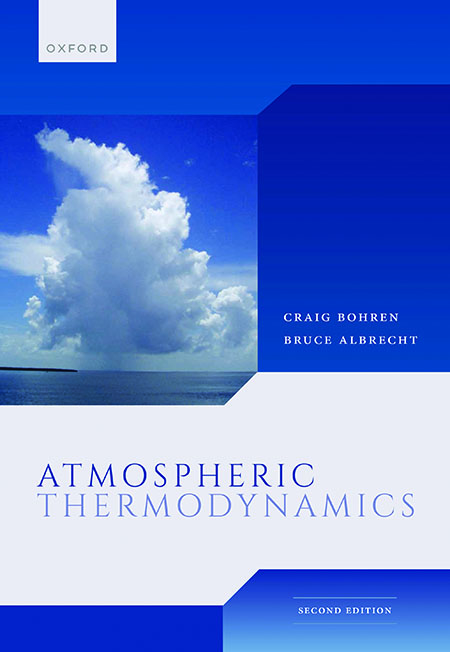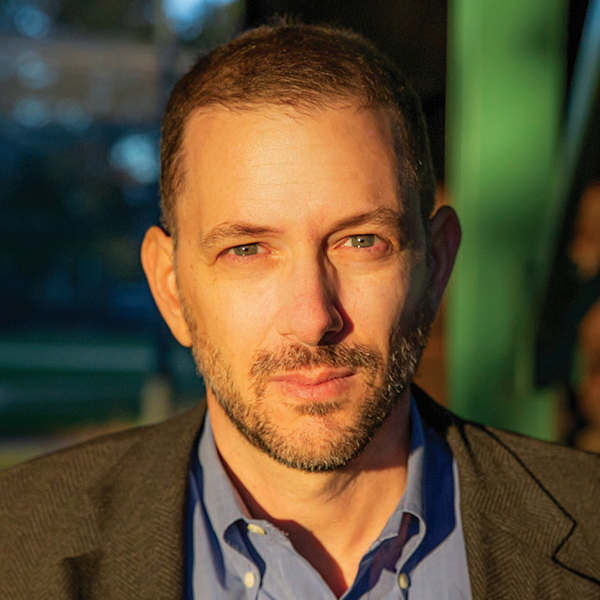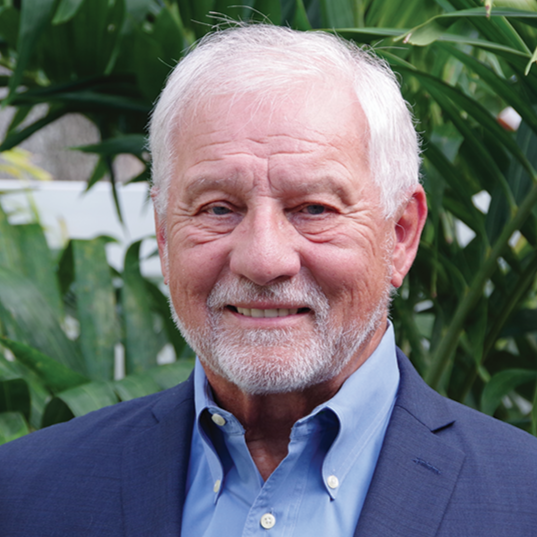Readings - Interview: Atmospheric Thermodynamics
- By AMS Staff
- Nov 9, 2023
Atmospheric Thermodynamics Textbook
A Textbook Conversation

Adam Sobel, professor of applied physics and applied mathematics and of Earth and environmental sciences at Columbia University, sat down with authors Craig Bohren and Bruce Albrecht to talk about the second edition of their book, Atmospheric Thermodynamics. Bohren is distinguished professor emeritus of meteorology in the Department of Meteorology and Atmospheric Science at The Pennsylvania State University and Albrecht is professor emeritus in the Department of Atmospheric Sciences at the University of Miami.

Sobel: Let’s start with the first edition. It’s really an unusual book, and there must have been some story behind it. How did it happen?

Bohren: I was dissatisfied with all the thermodynamics books I’d ever seen. I took thermodynamics when I was a mechanical engineering student, and then when I became a graduate student in physics, I took another course. But the books are horrible for the most part. One thing about them is the problems are mostly plug and chug. No interpretation, no connection with reality. What I wanted was a book that had real problems that will cause people to scratch their heads—problems inspired by observations or questions that I got from students or from really bad stuff in textbooks, in particular meteorology textbooks.

Albrecht: I learned my thermodynamics when I was at Colorado State University, and I was working with Alan Betts and Wayne Schubert and all their work involved thermodynamics. I got ahold of Iribarne and Godson, the atmospheric thermodynamics book at that time. Then at Penn State I started teaching atmospheric thermodynamics. Eventually I had all the notes, and said “well, I think we should put this into a book.” Now my notes were not anything like Craig had in mind for how to write a real textbook, so he brought that part. I think it was a good marriage in many ways.
Sobel: Craig, you mentioned the desire to fix the mistakes and to have interesting problems, but the ways in which this book is different from other books go far beyond that. First, it seems that you rederived almost everything from the beginning, which must have been a tremendous amount of work. Second, you really present some core concepts in ways that are, I think it’s not too strong to say, radical departures from the way they’re traditionally taught. For example, not using differentials and instead replacing them with time derivatives. Also, the text itself has a tremendous amount of personality. It has jokes, it has expressions of emotion
Albrecht: Well, Craig wanted to write a book that would be read. Most textbooks aren’t meant to be read. They’re just meant to be textbooks, that’s it.
Bohren: Many textbook authors are afraid to go beyond what is traditional. About the differentials, we are not alone. My criterion is, if I can find people at the highest ranks in thermodynamics who agree with us, then that’s good enough for me. Because many textbooks are not written, but are cloned—if you look at a whole range of textbooks, you’ll see the same mistakes and phrases passed on.
And they don’t read anything by historians of science. Instead, they look at what’s in textbooks to make sure that they’re not saying anything that isn’t in other textbooks, and then these errors get passed on from generation to generation.
Albrecht: From my perspective when I first started teaching atmospheric thermodynamics, I always used the time derivatives from the first law. I got that originally from John Dutton's book The Ceaseless Wind. It just makes so much sense. Conservation of energy is really all it is.
Sobel: We should talk about the other sacred cows that you kill in the book. Especially, you say we shouldn’t use “heat” as a noun, and entropy isn’t the same thing as disorder.
Bohren: Heat is not a substance and it’s not conserved. Energy is conserved, but we don’t know what energy is. Anybody who tries to define it is pulling a fast one. All we know is it’s conserved for an isolated system, and it has two forms, and we know what its dimensions are in terms of the SI basic quantities: length, mass, time. That’s all we know.
Sobel: Back to the history for a moment. Why is it important to have the history in there?
Bohren: Authors of textbooks have two choices: no history or correct history. But many authors seem to feel that they need to spice up textbooks and rewrite how things should have gone. If you read the old papers, you get a fluttery heart, because you realize those guys really knew a lot. They were confused at times, but that’s okay, because they were pioneering. I never read an old paper that I didn’t feel was worth the effort, and so that’s what’s been put in the book and we cite those papers.
Albrecht: One more thing to add about the history part. When someone reads our book another 50 years from now, they can find the history in there. Otherwise, that history is going to be lost. It’s important to know how things started.
Sobel: Let’s talk a little bit about the second edition. It’s a little unusual to see a second edition 25 years after the first one. How did that happen?
Bohren: We saw what was happening to the price of the book. It was now beyond what most students could afford. So, we said well maybe we should go to Dover and see if we can turn it into a paperback.
Albrecht: Then I had a conversation with the people at Oxford University Press and I asked if we could turn over the copyright from that edition to Dover. The editor at that time said, "Why don’t you consider doing another edition and we can print it as a paperback."
Bohren: We doubled the number of problems, from 200 to 400.
Sobel: Some of the chapters now have over a hundred problems at the end of a single chapter. And not only are they not plug and chug, but a lot of them don’t also have any numbers at all, or even equations. They’re qualitative.
Albrecht: That was a lot of Craig’s doing. He stays awake at night thinking of problems.
Sobel: The book got a lot bigger, but if I’m not mistaken there are no new chapters or even a lot of new sections. The explanations just got longer. It really reads like a labor of love.
Bohren: We’re trying to teach critical thinking. As far as I am concerned, the courses are simply vehicles for teaching people critical thinking. For example, when the student says “cold air is denser than warm air.” Well, what does that mean, wait a minute. How can you say that? I can show you that you’re wrong.
Because air temperature decreases with altitude, the logical implication is that the density of air increases, which is not what’s observed! Oh, I forgot to tell you, it (the assumption that density decreases with temperature) is at constant pressure. But they don't know that, all they know are the mantras. They don’t know what the caveats are.
Albrecht: The other thing I want to mention is that in addition to a textbook, it’s also, I think, become a reference for people in the field. I think we have 350 citations (of the first edition), which is pretty good for a textbook.
* For more content from the Bulletin of the American Meteorological Society, please click here.
